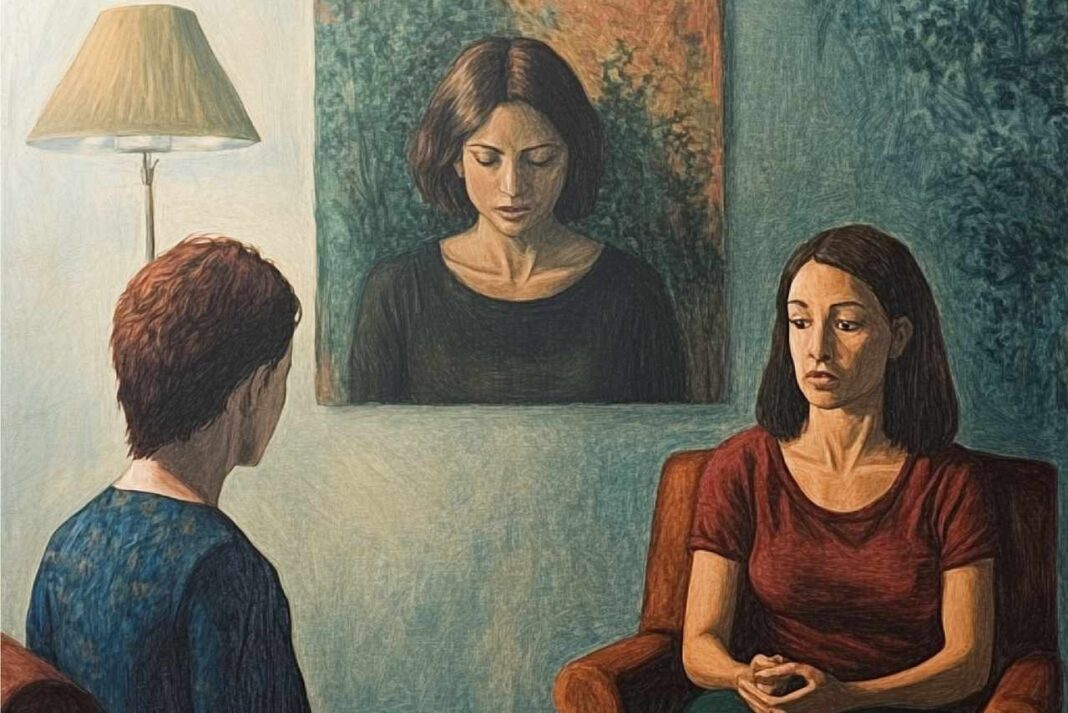There are wounds that words cannot touch. For many women who have experienced psychological trauma-be it domestic violence, childhood abuse, or systemic oppression-the body remembers long after the mind forgets. In such cases, healing requires more than just speaking. It requires expression through color, form, rhythm, and texture. This is where art therapy for trauma recovery enters-not merely as a creative outlet, but as a powerful psychotherapeutic intervention. In this blog post, we explore how art-based therapy can support women with trauma histories, drawing from feminist psychology and real-world clinical applications.
When Words Are Not Enough
Traditional talk therapy for trauma can be limited, especially when trauma is preverbal or repressed. Art therapy, as defined by the American Art Therapy Association (AATA), is “an integrative mental health and human services profession that enriches the lives of individuals, families, and communities through active art-making, creative process, applied psychological theory, and human experience.” For traumatized women, this method allows for safe expression when verbal language is not sufficient.
Art therapy for trauma survivors works by activating the right hemisphere of the brain, which is associated with imagery, emotion, and memory processing. As trauma often disrupts linear memory, symbolic expression can help reconstruct fragmented experiences. Moreover, creating therapeutic art allows for a sense of agency-something often stripped away by trauma.
Feminist Psychology and Trauma-Informed Care
Feminist therapy does not isolate the individual from her sociocultural context. Instead, it acknowledges how gendered power dynamics, patriarchy, and societal roles shape both experience and pathology. According to Laura Brown, one of the pioneers of feminist therapy, trauma in women cannot be divorced from the systemic injustices they face.
In this framework, art therapy becomes a form of resistance, not just a method of healing. Women reclaim their narratives, externalize internalized shame, and reconstruct their identities on their own terms. Group art therapy sessions in particular offer communal validation and the dismantling of isolation-two critical aspects in trauma recovery for women.
Clinical Applications
In clinical settings, art therapy techniques for trauma offer a versatile framework for addressing trauma in women by providing both symbolic distance and expressive depth. One such application is the creation of a safe place collage, often utilized with individuals experiencing complex PTSD from prolonged emotional abuse. In this practice, the client assembles images, textures, and colors to construct a visual representation of a place where they feel secure. This image not only serves as an externalized symbol of safety, but also becomes a powerful mental grounding tool during episodes of emotional dysregulation, such as flashbacks or intrusive memories.
Another widely employed technique is body mapping in trauma therapy, which is particularly effective with survivors of sexual trauma. These individuals often struggle with body dissociation, shame, or feelings of alienation from their physical form. Body mapping therapy begins by tracing the client’s silhouette onto a large sheet of paper, which then becomes a canvas for expressive engagement. Clients are encouraged to fill in their outline with colors, textures, symbols, and words that reflect their inner experience. This process facilitates the reintegration of body awareness and fosters a more compassionate, embodied relationship with the self. In this way, the intervention supports emotional regulation while challenging internalized narratives of self-loathing or fragmentation.
A third intervention is trauma narrative painting, frequently used in long-term therapeutic work. This technique encourages clients to represent aspects of their trauma history through abstract or figurative painting. Initially, the artwork may appear disorganized, fragmented, or emotionally intense-mirroring the psychological chaos of unprocessed trauma. However, over time and with ongoing therapeutic support, these visual narratives often begin to shift in tone and structure. As coherence emerges in the paintings, it frequently parallels internal processes of meaning-making and psychological integration. This transformation in visual storytelling can signify the reclaiming of agency, the reordering of memory, and the softening of emotional charge associated with past experiences.
It’s essential to note that the therapeutic power of art lies in the process-not the final product. The aim is not to create a masterpiece, but to gain insight, release emotion, and foster self-connection through creative expression. The artwork becomes a mirror of the inner world a tangible form of what has often been intangible pain.
As Cathy Malchiodi (2015) states, “Art therapy gives form to feelings and meaning to memories.” For women with trauma, who are often silenced or disbelieved, being able to “see” their experience on paper can validate their reality in powerful ways.
Conclusion
In a world that has often denied their voices, art therapy for women with trauma offers a new vocabulary-one made of images, textures, and colors. It is a gentle rebellion against silence and shame. It is, in the words of Audre Lorde, “the transformation of silence into language and action.” And for many, that transformation begins with a single brushstroke.
References
Brown, L. S. (1994). Subversive Dialogues: Theory in Feminist Therapy
Herman, J. L. (1992). Trauma and Recovery
Malchiodi, C. A. (2015). Art Therapy and Health Care


